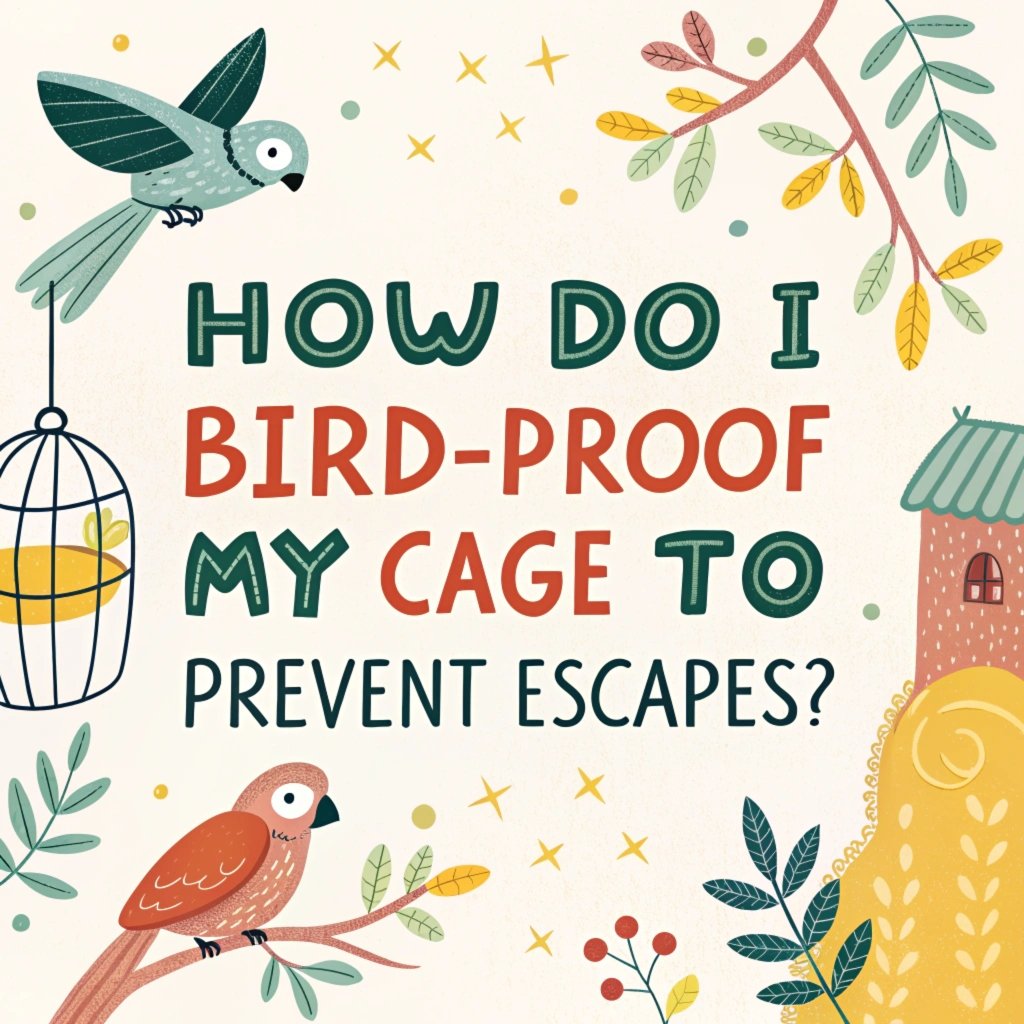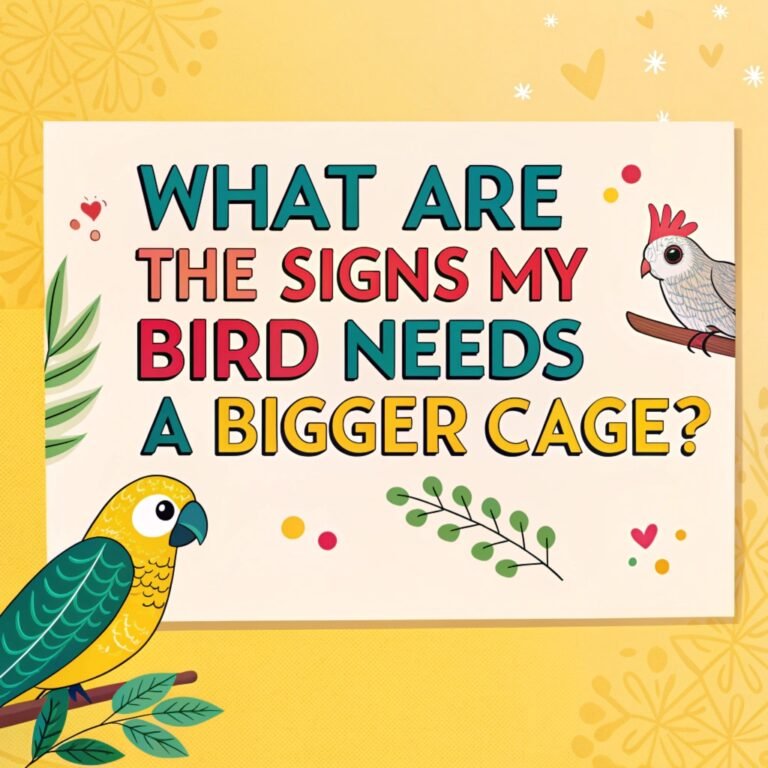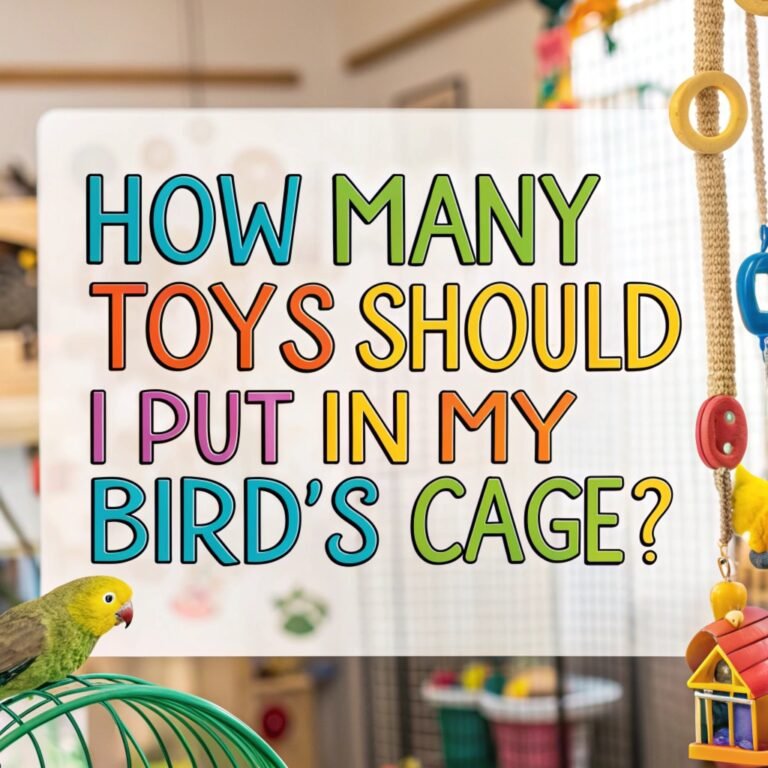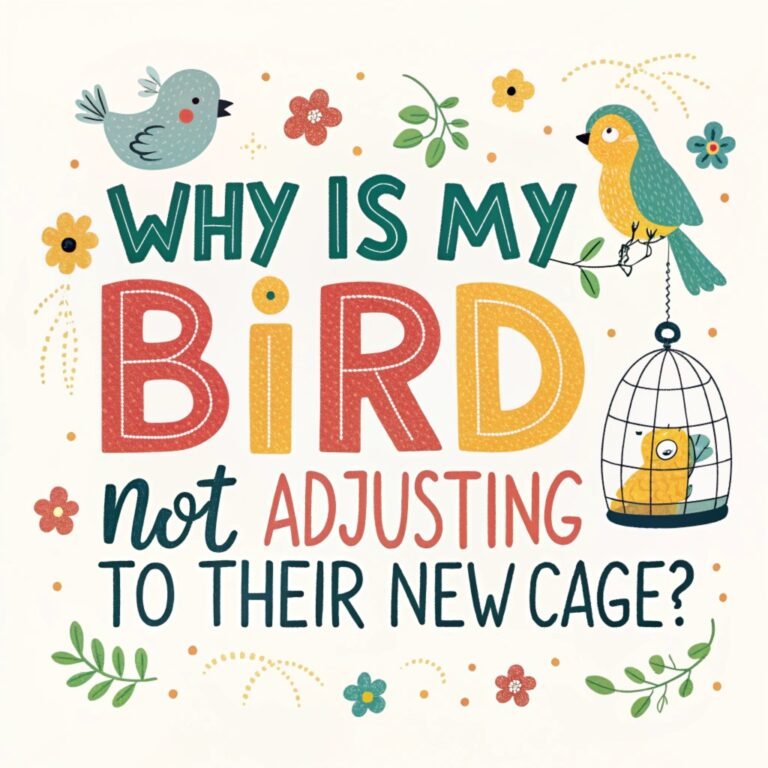How To Bird-Proof Cage To Prevent Escapes? Essential Tips for Keeping Your Feathered Friend Safe and Secure
Bird ownership brings joy and companionship, but it also comes with the responsibility of ensuring your feathered friend’s safety.
One of the most crucial aspects of bird care is preventing escapes, which can be dangerous and potentially life-threatening for your pet.
In this comprehensive guide, we’ll explore various strategies and techniques to bird-proof your cage and create a secure environment for your avian companion.
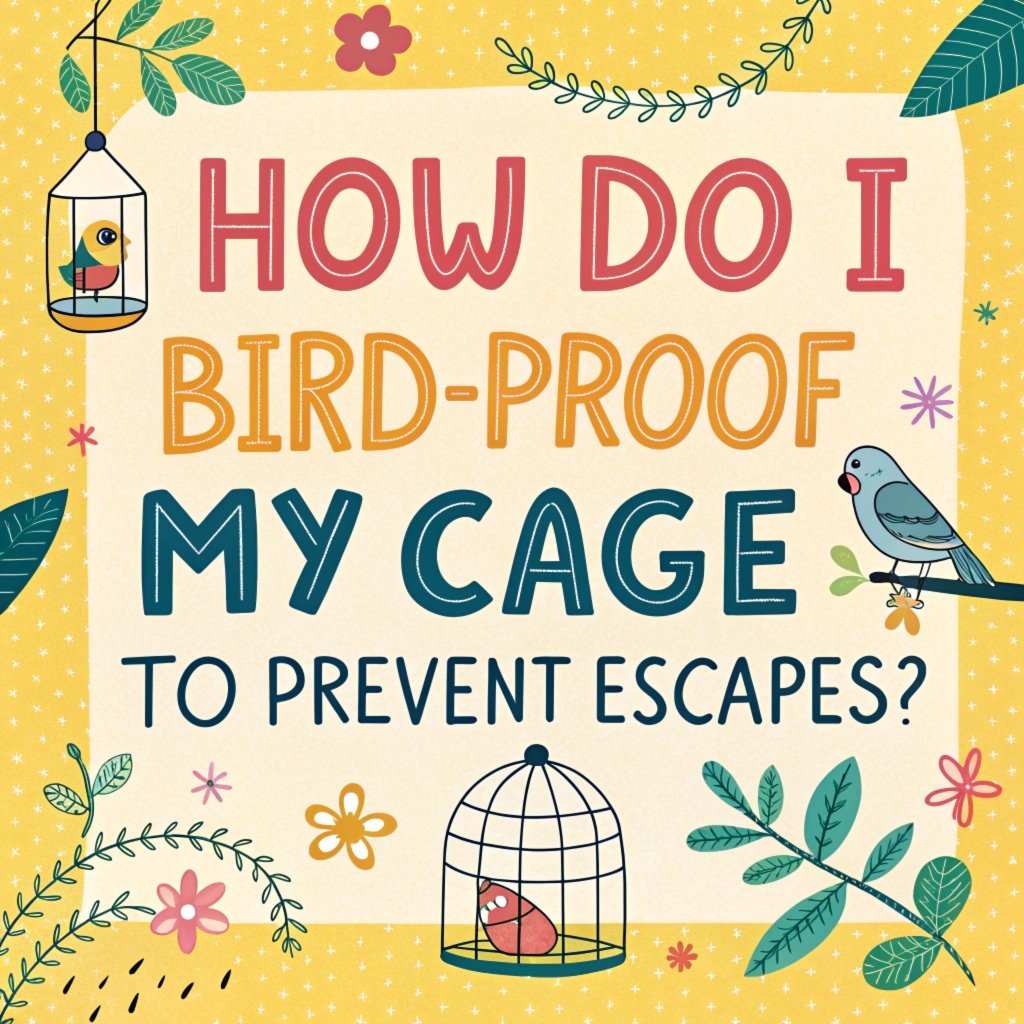
Key Takeaways:
- Secure cage doors: Always double-check that cage doors are locked before leaving the house.
- Install safety latches: Use additional locks or clips to reinforce cage door security.
- Inspect cage regularly: Check for any damage, loose bars, or potential escape routes.
- Proper cage size: Ensure the cage is appropriate for your bird’s species and size.
- Strategic cage placement: Position the cage away from windows, doors, and potential hazards.
- Wing clipping: Consider professional wing clipping as a safety measure.
- Create a safe room: Designate a bird-safe area for out-of-cage time.
- Use window screens: Install secure screens on windows to prevent escapes during ventilation.
- Educate family members: Teach everyone in the household about bird safety protocols.
- Implement a double-door system: Use a secondary barrier when entering or exiting the bird’s room.
- Provide engaging toys: Keep your bird mentally stimulated to reduce escape attempts.
- Regular veterinary check-ups: Ensure your bird’s health and address any behavioral issues.
- Microchip your bird: Consider microchipping for identification in case of escape.
- Create an emergency plan: Prepare a strategy for quick action if an escape occurs.
- Monitor environmental factors: Be aware of changes that might stress your bird and lead to escape attempts.
Understanding the Importance of Cage Security
Ensuring the safety of your pet bird begins with a secure cage. Birds are naturally curious and intelligent creatures, often seeking ways to explore their surroundings.
This innate behavior can lead to escape attempts, which can be dangerous for domesticated birds unaccustomed to the outside world.
A well-secured cage not only prevents escapes but also provides a safe haven for your feathered friend. It’s crucial to understand that even the most docile and well-behaved birds can unexpectedly attempt to fly away, especially when startled or excited.
By prioritizing cage security, you’re not just preventing escapes; you’re also protecting your bird from potential hazards in your home and the dangers of the outside world.
Choosing the Right Cage for Your Bird
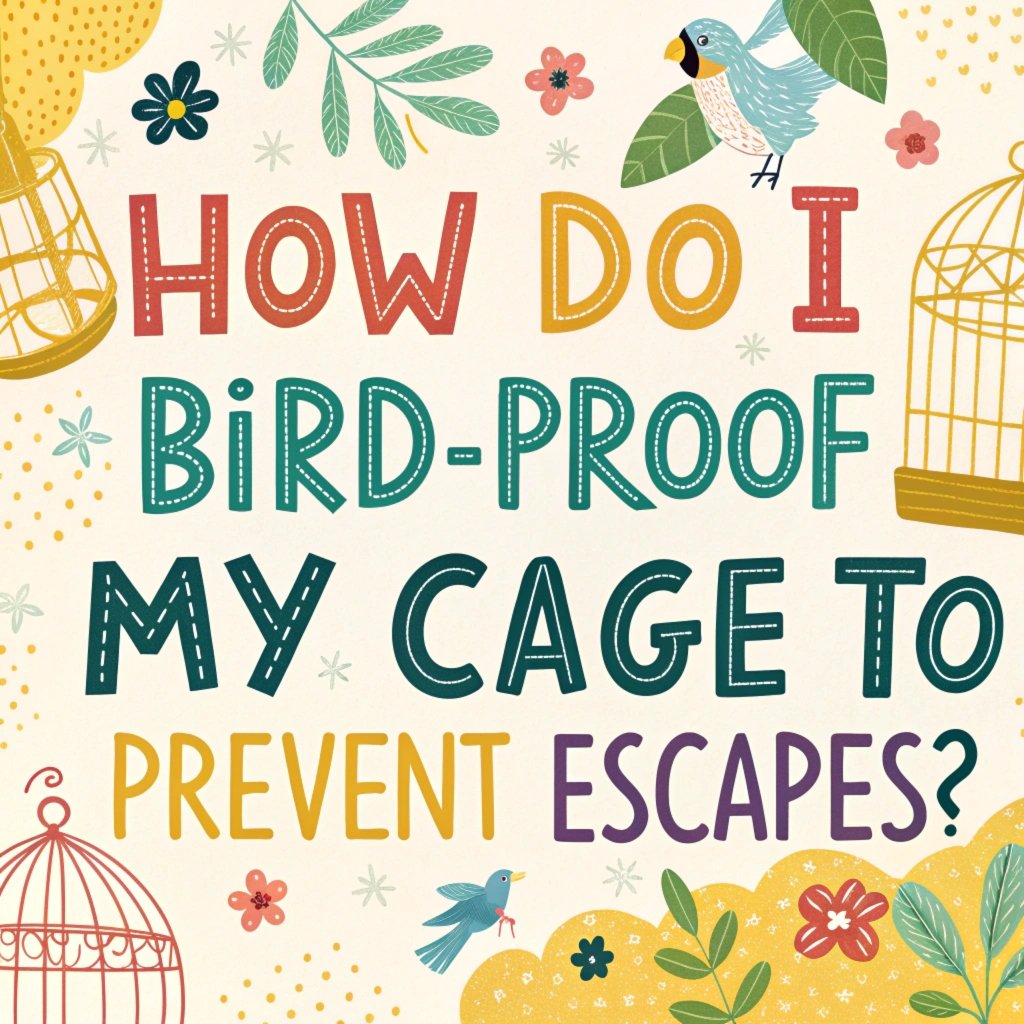
Selecting an appropriate cage is the foundation of bird-proofing. The cage should be spacious enough for your bird to spread its wings comfortably and move around, yet secure enough to prevent escapes.
Consider the size and species of your bird when choosing a cage. Larger birds like macaws or cockatoos require more robust cages with stronger bars, while smaller species like budgies or cockatiels can be housed in cages with narrower bar spacing.
Ensure that the bar spacing is appropriate for your bird’s size to prevent it from squeezing through. Look for cages with secure latches and locks that your bird cannot easily manipulate.
Some birds are adept at figuring out simple locks, so consider cages with multiple or complex locking mechanisms.
Additionally, choose a cage made from bird-safe materials that can withstand chewing and are free from toxic substances.
Securing Cage Doors and Latches
The most common point of escape for birds is through cage doors. It’s essential to ensure that all doors and access points on the cage are secure and bird-proof.
Inspect the latches regularly to make sure they’re functioning correctly and haven’t been damaged or weakened by your bird’s attempts to open them.
Consider adding secondary locks or clips to doors for an extra layer of security. Some bird owners use carabiners or specially designed bird-proof locks to reinforce cage doors.
Train yourself and family members to double-check that all doors are securely closed after interacting with your bird.
Develop a habit of gently shaking the cage doors after closing them to ensure they’re properly latched.
For particularly clever birds, you might need to use combination locks or other complex mechanisms that they can’t figure out.
Regular Cage Maintenance and Inspection
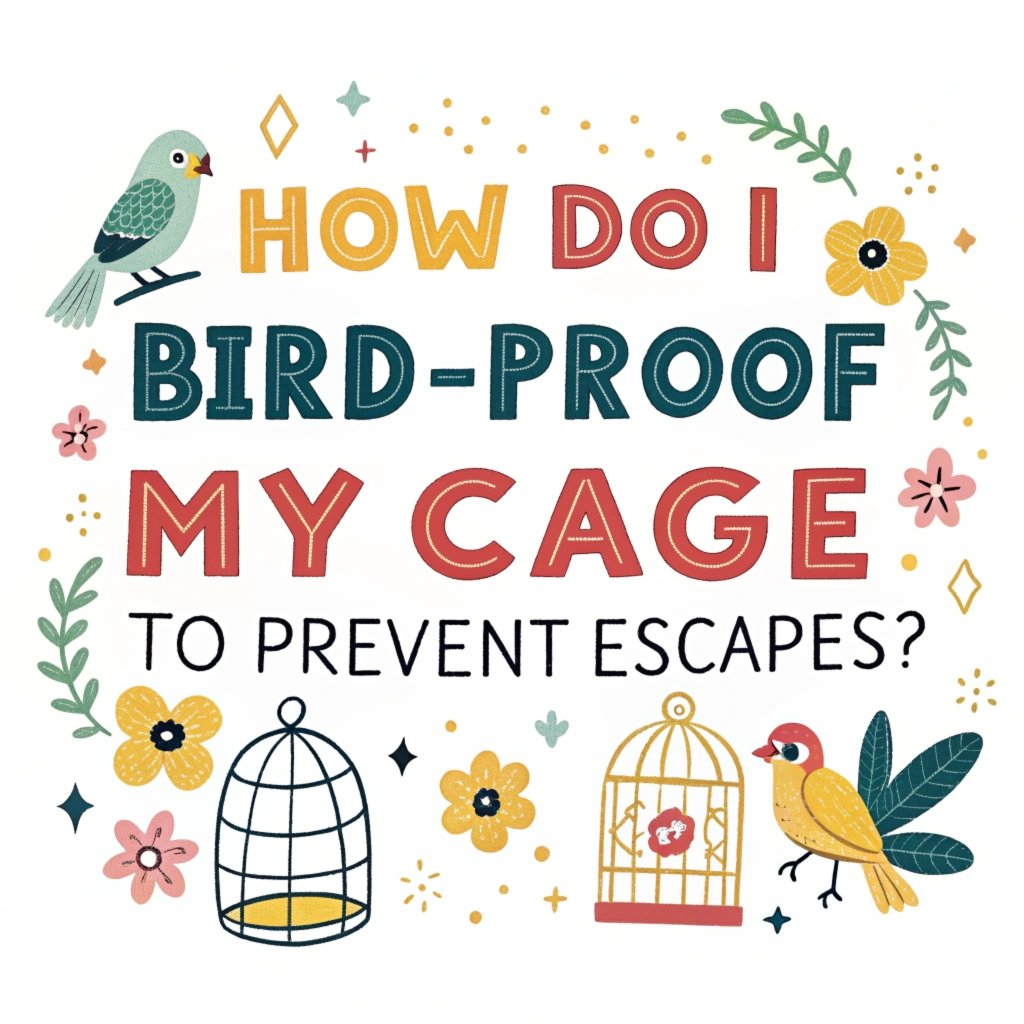
Consistent maintenance of your bird’s cage is crucial for preventing escapes. Regularly inspect every inch of the cage for signs of wear, damage, or potential weak points.
Check for loose or bent bars, gaps that may have widened over time, or any areas where your bird might have been working to create an opening.
Pay special attention to corners and joints, as these can be weak points in cage construction. Clean the cage thoroughly on a regular basis, which not only maintains hygiene but also gives you an opportunity to closely examine its condition.
Look for signs of chewing or tampering, especially around doors and latches. If you notice any damage or potential escape routes, address them immediately.
Consider replacing parts or the entire cage if necessary to maintain a secure environment for your bird.
Creating a Safe Environment Outside the Cage
While a secure cage is essential, it’s also important to create a safe environment for your bird when it’s out of its cage.
Bird-proof the room where your pet spends its out-of-cage time by removing or securing potential hazards. Cover windows with secure screens or keep them closed when your bird is out.
Be cautious of ceiling fans, open doors, and other potential escape routes. Remove toxic plants, cover electrical cords, and secure any small objects that your bird might swallow.
Create designated perching areas with bird-safe materials to encourage your pet to stay in safe zones.
Always supervise your bird during free-flight time and be prepared to quickly and calmly retrieve it if it flies to an unsafe area.
Implementing a Double-Door System
A double-door system can significantly reduce the risk of bird escapes. This involves creating a secondary barrier between your bird’s living area and the rest of your home or the outdoors.
You can achieve this by installing a screen door or a second door at the entrance of the bird’s room. When entering or exiting the room, ensure that one door is always closed before opening the other.
This system provides an extra layer of security, preventing your bird from flying out even if it manages to escape its cage.
Train all household members and visitors to use this system consistently. Consider placing reminder signs on both doors to reinforce the importance of this safety measure.
The Role of Wing Clipping in Escape Prevention
Wing clipping is a controversial but often effective method of preventing bird escapes. This procedure involves trimming the primary flight feathers to limit a bird’s ability to achieve lift and sustained flight.
While it doesn’t completely prevent flight, it can significantly reduce the risk of a bird flying away if it escapes its cage.
However, wing clipping should only be performed by a qualified avian veterinarian or an experienced professional. Improper clipping can lead to injury or psychological distress for the bird.
It’s important to note that wing clipping is not a permanent solution and needs to be repeated as new feathers grow in.
Some bird owners prefer to keep their birds fully flighted for exercise and natural behavior, in which case other safety measures become even more critical.
Training Your Bird for Safety
Behavioral training can play a significant role in preventing escapes and ensuring your bird’s safety. Teach your bird recall commands so it will return to you on cue.
This can be invaluable if your bird ever does escape its cage or your home. Use positive reinforcement techniques to encourage your bird to stay in safe areas when out of its cage.
Train your bird to step up onto your hand or a perch on command, which can help you quickly retrieve it from potentially dangerous situations.
Familiarize your bird with its cage as a safe space, encouraging it to return to the cage voluntarily.
Consistent training not only enhances safety but also strengthens the bond between you and your feathered companion.
Using Visual Deterrents to Prevent Escapes
Visual deterrents can be effective in discouraging your bird from attempting to escape or approaching unsafe areas.
Place reflective objects or bird-safe mirrors near potential escape routes like windows or doors. Many birds are cautious of unfamiliar reflective surfaces and may avoid them.
Use brightly colored tape or decals on windows to make them more visible to your bird, reducing the risk of collisions.
Some bird owners hang wind chimes or other moving objects near potential escape points, as the movement and sound can deter birds from approaching.
However, introduce these deterrents gradually and monitor your bird’s reaction to ensure they don’t cause undue stress or fear.
The Importance of Proper Cage Placement
Where you place your bird’s cage can significantly impact its security. Avoid positioning the cage near windows or doors where drafts or outside stimuli might excite or stress your bird, potentially leading to escape attempts.
Keep the cage away from heat sources like radiators or direct sunlight, which can cause discomfort and agitation.
Place the cage against a wall to provide a sense of security and reduce the likelihood of the cage being accidentally knocked over.
Ensure the cage is at a height where you can easily monitor and interact with your bird.
Consider the room’s traffic patterns to minimize the risk of the cage being bumped or the bird being startled by sudden movements.
Providing Mental Stimulation to Reduce Escape Attempts
Boredom and lack of stimulation can lead to increased escape attempts as birds seek excitement or new experiences. Provide your bird with a variety of toys and activities to keep it mentally engaged. Rotate toys regularly to maintain interest.
Offer foraging opportunities by hiding treats in toys or creating puzzle feeders. Spend time interacting with your bird daily, offering training sessions, and allowing supervised out-of-cage time.
A well-stimulated bird is less likely to focus on escaping and more content in its environment.
Consider providing a variety of perches, swings, and climbing structures within the cage to create a dynamic and engaging living space.
Emergency Preparedness for Potential Escapes
Despite all precautions, it’s crucial to be prepared for potential escapes. Have an emergency plan in place that all household members are familiar with. Keep a recent photo of your bird and detailed description handy for identification purposes.
Consider microchipping your bird for permanent identification. Have a travel cage or carrier easily accessible for quick retrieval attempts.
Familiarize yourself with your bird’s favorite treats and sounds to aid in luring it back if it escapes.
Keep the contact information of local veterinarians, animal control, and bird rescue organizations readily available.
Being prepared can make a significant difference in quickly and safely recovering your bird if an escape occurs.
Educating Family Members and Visitors
Consistent adherence to safety protocols by everyone in the household is crucial for preventing bird escapes.
Educate all family members, including children, about the importance of cage security and proper handling of the bird.
Create clear rules and guidelines for interacting with the bird and maintaining its environment. Teach everyone how to properly open and close cage doors, and the importance of always securing them.
Inform visitors about the presence of a bird in the home and any safety measures they need to follow.
Consider placing reminder signs near the bird’s living area to reinforce safety protocols. Regular family discussions about bird safety can help maintain awareness and prevent complacency.
Seasonal Considerations for Bird Safety
Different seasons bring unique challenges for bird safety and escape prevention. During warmer months, be extra cautious about open windows and doors.
Use secure screens if you need ventilation. In colder seasons, be aware of drafts that might stress your bird and lead to escape attempts. Holiday decorations can pose additional risks, so be mindful of where you place them in relation to your bird’s living area.
During fireworks seasons like New Year’s Eve or Independence Day, take extra precautions to secure your bird and provide a calm environment, as loud noises can cause panic and increase escape attempts.
Always be aware of how seasonal changes might affect your bird’s behavior and adjust your safety measures accordingly.
FAQs
What are the most common ways birds escape from their cages?
The most common escape routes for birds are through unlocked or improperly secured cage doors, gaps in cage bars that have widened over time, and during cage cleaning or feeding when doors are left open. Birds are also known to escape when owners open windows or doors without securing the bird first.
How often should I inspect my bird’s cage for potential escape routes?
It’s recommended to perform a thorough inspection of your bird’s cage at least once a week. This includes checking all latches, bars, and potential weak points. Additionally, a quick daily check when cleaning or feeding can help catch any immediate issues.
Is wing clipping necessary to prevent escapes?
Wing clipping is not absolutely necessary but can be an effective method to reduce flight capability and prevent escapes. However, it’s a personal choice that should be discussed with an avian veterinarian, considering your bird’s species, personality, and living environment.
What should I do if my bird escapes despite my precautions?
If your bird escapes, remain calm and act quickly. Search the immediate area, call the bird’s name, and use familiar sounds or treats to lure it back. If the bird has flown outside, expand your search area, post “lost bird” notices, and contact local animal control and veterinary offices.
Can I use a larger cage to reduce my bird’s desire to escape?
While a larger cage can provide more space and enrichment, potentially reducing escape attempts due to boredom or frustration, it’s not a guarantee against escapes. Proper security measures are still essential regardless of cage size.

Hello, I’m Amelia White, the founder of birdsfanatic.com. As a lifelong bird enthusiast and spiritual seeker, I’ve always been fascinated by the mystical connections between birds and the human experience. On this site, I share my knowledge and insights into the symbolic meanings and spiritual significance of various bird species, exploring their roles in mythology, folklore, and cultural traditions. Join me on this journey into the world of birds, where we’ll discover the hidden wisdom and guidance that these magnificent creatures have to offer.

